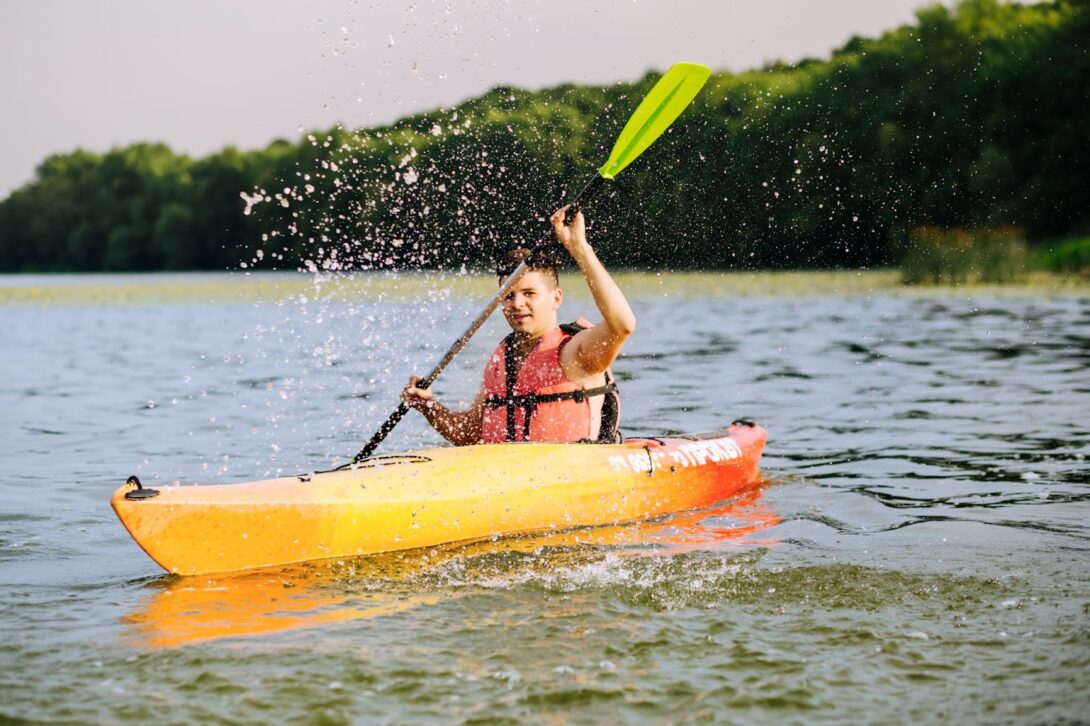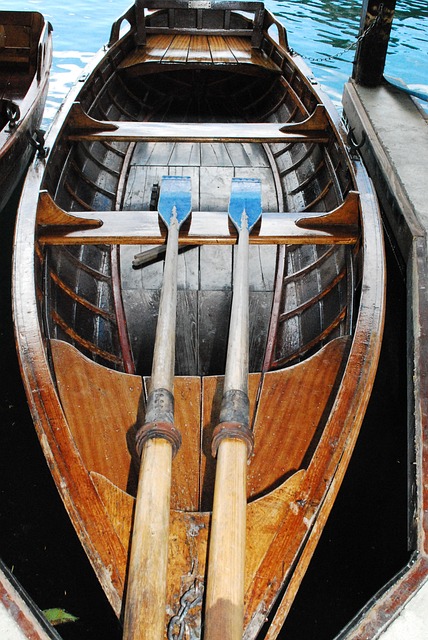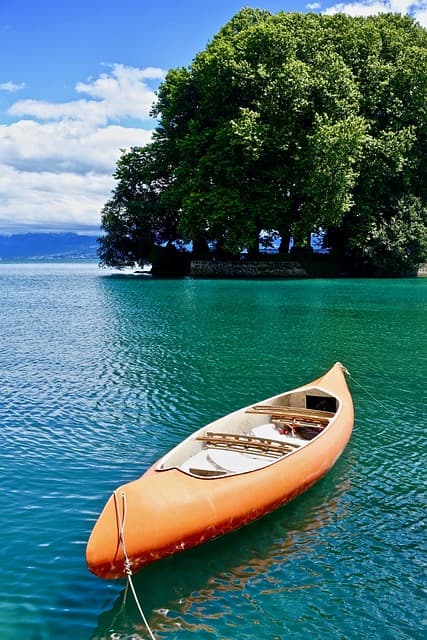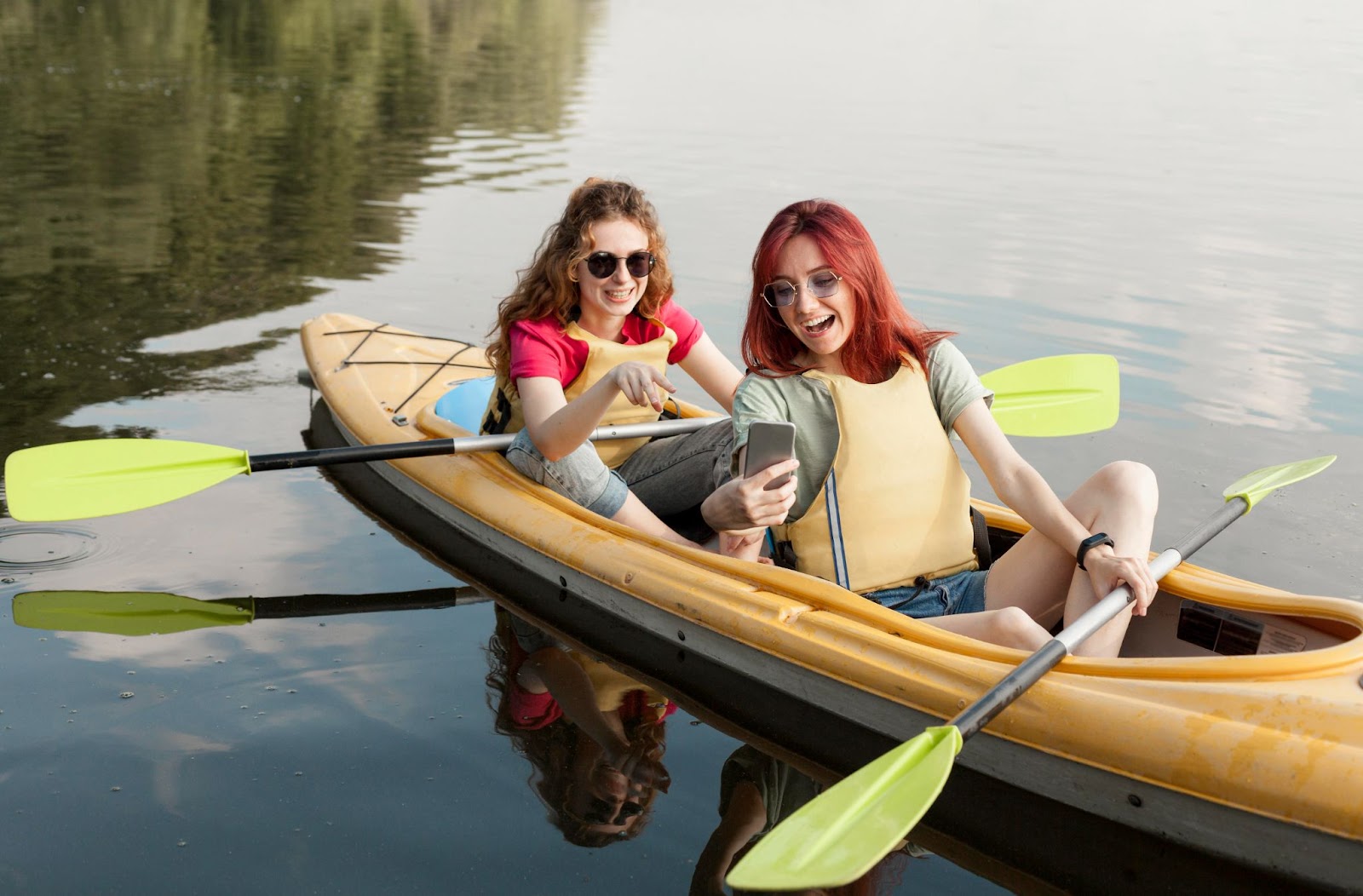Gratefully, the authoritative entities responsible for supervising the boating statutes and ordinances in the state of Texas comprehend the elegance of simplicity. The regulations pertaining to canoes and kayaks in the Texan jurisdiction extend a generous dispensation to unpowered watercraft, sparing them from the requirement of formal registration. Nevertheless, an imperative mandate remains in force, dictating the presence of a personal flotation device for every individual on board these vessels, alongside a conspicuously audible sound-emitting apparatus, exemplified by the likes of a whistle.
Navigating Texas Waterways: A Comprehensive Guide to Canoeing and Kayaking Laws
Governing Authority and Water Safety Enforcers
Embark on a journey across the picturesque waterways of Texas with a keen understanding of the regulations that safeguard your canoeing and kayaking adventures. The guardian of these aquatic realms is none other than the Texas Parks and Wildlife Department (TPWD). This esteemed agency stands as the sentinel of all boating and water safety laws, including those that pertain to the serene realms of canoeing and kayaking.
Picture the dedicated Texas game wardens, handpicked sentinels of TPWD, diligently patrolling these watery domains. It’s their noble duty to ensure that every ripple on these tranquil waters resonates with adherence to the laws. A living embodiment of vigilance, they stand watch to safeguard both your aquatic escape and the thriving ecosystems that call these waters home.
If you’re yearning for an immersive and insightful journey through these regulations, TPWD has meticulously crafted a comprehensive guidebook. This invaluable resource unravels the intricacies, laying bare the specifics of canoeing and kayaking laws, and serves as a beacon to illuminate your path through the shimmering waters of Texas.
Embarking Unregistered: Canoe and Kayak Adventures
Explore the waters unburdened by bureaucracy. In the heart of Texas, a world of unperturbed paddling awaits those who traverse the watery realms with human power alone. The Lone Star State’s embrace extends warmly to unpowered canoes and kayaks, setting them free from the requirement of registration or licensing.
As you set out on your aquatic journey, remember that once you introduce a motorized companion to your vessel, a symphony of laws come into play. No matter the horsepower or thrust, the mighty TPWD beckons you to adorn your watercraft with its distinctive numerical emblem. This mark, proudly displayed on both sides of your vessel, signifies your entry into the maritime fold, a seamless integration of technology and tradition.
Titles and Tales of Ownership
Your vessel deserves a tale, a narrative that echoes through the waves and reverberates within the hearts of fellow adventurers. Titles, the badges of ownership and legacy, adorn both your vessel and its mechanical companion. As your canoe or kayak stretches its spine to reach the 14-foot threshold, the mandate of titling becomes a whisper in the wind. Yet, for those grander vessels that seek to conquer greater waters, the scroll of titling unfurls with utmost importance.
Delve into the archives of TPWD, where the scrolls of registration and titling unfurl like ancient maps leading to the heart of maritime legality.
Paddling into the Uncharted Waters of Licensing
An unpowered craft, a vessel solely propelled by the poetry of human movement, dances upon the waters unburdened by licensing. Yet, even as the currents embrace your unperturbed journey, the specter of titling casts its gentle shadow.
Embark upon these waters with awareness, for even in the absence of an assisting motor, the guardian of the aquatic expanse beckons for your vessel’s title.
Navigating the Helm: Paddlers and Powered Craft
As you grip the paddle, you become the maestro of your aquatic symphony. In the world of unpowered vessels, no certificate is required to embark on your melodic journey. Furthermore, for those navigating the waters with a motor whose power is a mere whisper, 15 HP or less, the vast tapestry of Texas waterways unfurls without the need for specialized education.
Enter the realm of motorized marvels without the shackles of boater education cards. Age holds no dominion over this realm, yet the horizon shifts once your motor’s heartbeat surges beyond 15 HP.
Tempests of the Mind: The Sirens of Sobriety
As the sun kisses the horizon and paints the waters with hues of gold, remember that no realm is impervious to the allure of indulgence. The elixirs of revelry hold no sway over your vessel’s helm. Under the Texas stars, the tendrils of intoxication must not entwine with your journey, for no soul may captain a canoe while under the influence of spirits or substances.
Beware the siren call of a blood alcohol content exceeding 0.08%, for it heralds the violation of the BWI laws, casting shadows upon your aquatic odyssey.
Essential Gear: Safeguarding Every Paddlestroke
In the midst of these aquatic reveries, safety stands as your steadfast companion. Embrace the wisdom of preparedness as you outfit your vessel, ensuring the well-being of all who traverse its watery embrace.
Equip your vessel with the essentials:
- U.S. Coast Guard-approved life jackets: These tailored life-saving garments, attuned to each individual, stand as a testament to your commitment to safety;
- A beacon in the dark: A white navigation light, akin to a celestial guide, pierces through the veil of obscurity during moments of low visibility, be it the cloak of night, the embrace of dawn or dusk, or the veils of fog and rain;
- Signal amidst the tempest: For those who venture towards coastal waters, the call for a visual distress signal echoes through maritime lore, ensuring that even in the midst of adversity, a lifeline of hope remains steadfast;
- Chart your course with these lifesaving implements, and navigate the waters with the grace of a seasoned mariner.
Embark upon the aqueous canvas of Texas, where the rivers, lakes, and bayous converge into a symphony of exploration. Armed with the knowledge of TPWD’s watchful eye and the intricacies of maritime law, set forth upon your voyage, where every paddlestroke propels you deeper into the embrace of the Lone Star State’s aquatic wonderland.
Navigating the Waters of Age Requirements for Operating Canoes with Electric Trolling Motors in Texas
Embarking on the serene waters of Texas with a canoe equipped with an electric trolling motor offers a delightful aquatic experience. As you prepare to set sail, you might wonder about the age restrictions governing such maritime endeavors. Fear not, for the Lone Star State offers a tapestry of regulations that cater to both youthful adventurers and seasoned mariners.
In the heart of Texas, the freedom to explore the tranquil waterways is extended to individuals of all ages. If your aquatic aspirations are centered around a non-motorized vessel, such as a canoe, the age of the captain becomes an inconsequential element. Texas, with its boundless expanse of water bodies, embraces a policy devoid of age-based constraints for those steering non-motorized watercraft.
Venturing into the realm of motorized aquatic exploration, the Lone Star State exhibits a nuanced regulatory framework. Within the enchanting realm of vessels boasting 15 horsepower or less, the age of the operator holds no dominion. Whether you’re a seasoned sailor or a novice, the thrill of maneuvering these vessels is accessible without an age-related gatekeeper.
For the young, aspiring navigators under the age of 13, the opportunity to commandeer these more powerful vessels is not lost. A guiding hand, embodied by an individual who embodies the age of 18 or above, stands as a pillar of assurance. Beyond age, the beacon of legitimacy shines upon the supervisor, one who bears the capability to lawfully operate the vessel and remains steadfastly on board throughout the voyage.
Sailing towards Certification: The Voyage to Legal Eligibility
For those aiming to unlock the potential of personal watercraft or other motorboats, embarking upon a journey towards boating certification becomes a rite of passage. The compass guiding this voyage points towards the Official Texas Boating Safety Course website. Here, the aspirants delve into a comprehensive curriculum, a symphony of nautical knowledge and safety protocols, harmonizing to compose a symphony of expertise. Upon the successful completion of this maritime overture, the certification card is bestowed, allowing the bearer to navigate Texas’s waters with confidence, skill, and legal legitimacy.
Can I Imbibe Alcoholic Beverages Whilst Propelling My Canoe Across Texan Waters?
Indeed, the legal boundaries dictate that partaking in the consumption of alcoholic libations should not push one’s bloodstream alcohol concentration beyond the established threshold of 0.08%. The state of Texas enforces stringent regulations concerning the operation of watercraft while influenced by alcohol, and such violations may lead to the revocation of an individual’s driving privileges, subject to specific conditions.
It is noteworthy, however, that Texan regulations extend a degree of leniency when it comes to the possession of unsealed bottles of alcoholic beverages aboard boats, with the provision that these beverages are intended for responsible and moderate consumption by any individual present on the vessel – including the designated operator. It is imperative to observe the stipulated blood alcohol content limit of 0.08% to remain compliant with these provisions.
Essential Gear for Canoeing and Kayaking Adventures in Texas
Embarking on a memorable canoeing or kayaking journey along Texas’ picturesque waterways demands meticulous preparation and adherence to safety regulations. To ensure legal compliance and a secure experience, here’s an in-depth exploration of the required equipment for your aquatic escapades:
Life Jackets: Safeguarding Every Adventurer
A paramount requirement for waterborne excursions, personal flotation devices (PFDs) are the cornerstone of on-water safety. Texas law mandates the possession of readily accessible and wearable PFDs for all occupants of your vessel. These PFDs must meet Type I, II, or III standards, or alternatively, a wearable Type V variant. A crucial rule mandates that children below the age of 13 must not only carry but also wear an approved PFD at all times when the vessel is in motion. This ensures their utmost protection in case of unforeseen events.
Expanded Note:
PFDs come in various designs, each tailored to different water activities. Choosing the appropriate type based on your adventure’s nature and conditions ensures optimal safety. Remember, PFDs should fit snugly and comfortably, allowing for unrestricted movement while providing reliable buoyancy.
Throwable Flotation Devices: A Prudent Choice
While not legally obligatory, carrying throwable flotation devices exemplifies responsible watercraft ownership. These devices, such as cushions or ring buoys, can be a lifeline in emergencies, aiding in the rescue of someone struggling in the water. Their inclusion underscores a commitment to safety and the well-being of fellow water enthusiasts.
Manual Bailing Device: A Wise Precaution
Although not officially mandated, equipping your canoe or kayak with a manual bailing device is a judicious decision. This tool serves as a proactive measure against potential water accumulation, helping maintain a stable and dry vessel. In situations where unexpected water ingress occurs, a bailing device becomes indispensable, preventing the risk of swamping and ensuring a smoother expedition.
Visual Distress Signals (VDS): Coastal Waters Requirement
For those venturing into coastal waters, visual distress signals (VDS) become imperative. VDS encompass both daytime and nighttime signaling mechanisms, ensuring heightened visibility during low-light conditions. While vessels exceeding 16 feet necessitate both daytime and nighttime VDS, canoes or kayaks measuring less than 16 feet are required only to carry nighttime signaling devices. Flares, smoke signals, and non-pyrotechnic alternatives constitute viable options for VDS.
Navigation Lights: Illuminating Safe Pathways
Unpowered vessels, such as canoes and kayaks, demand minimal lighting to prevent collisions and ensure safe navigation. At the least, a bright white lantern with adequate luminosity should grace your craft, guiding your path in dimly lit scenarios. This luminous beacon acts as a safeguard against potential collisions, enhancing your visibility to other waterway travelers.
Sound Devices: Audible Vigilance
In line with official regulations, canoes and kayaks in Texas must be equipped with sound-producing devices. Amplifying your presence on the water, these audible signals serve as a precautionary measure, enabling effective communication and enhancing overall safety. Human voices, despite their inherent loudness, do not suffice as compliant sound devices.
Fire Extinguishers: Not Applicable to Paddlers
Unlike certain watercraft categories, canoes and kayaks are exempt from carrying fire extinguishers. This exemption is based on the vessels’ design and intended usage, acknowledging their minimal fire risk and reinforcing their focus on water-based exploration.
Emergency Locator Beacons: A Pragmatic Addition
While not mandated by law, the inclusion of an emergency locator beacon (ELB) emerges as a judicious and proactive choice for every canoeist and kayaker. Irrespective of your chosen paddling destination, an ELB ensures that you possess a reliable means of summoning assistance during emergencies. This device utilizes modern technology to transmit distress signals, expediting rescue operations and safeguarding your well-being.
Must Adults Adorn Life Jackets While Traversing the Texan Waters in a Canoe or Kayak?
In the vast expanse of Texas waterways, whether one embarks upon a canoe or a kayak, regardless of its dimensions, a crucial maritime mandate unfurls: a Type I, II, or III personal flotation device, duly sanctioned by the venerable United States Coast Guard, must find its berth aboard, one for each soul aboard the vessel.
Yet, let us not disregard the youthful wanderers, those not yet enshrined in the embrace of thirteen solar cycles. For them, a further decree resonates – the PFD, an acronym that stands as an emblem of safety, shall not merely be kept within arm’s reach but clasped securely upon their frames, an unwavering companion throughout their aquatic sojourn.
A note of pertinence beckons for its inclusion – the state of this flotation guardian. Tattered tapestries of wear and tear are not to enshroud its form, nor shall broken bonds fetter its purpose. Withal, the PFD shall be as a sartorial specter, easily donned, and tailored to the wearer’s dimensions, an impeccable fit being of paramount import.
Thus, as one contemplates the rhythmic dance of paddle and wave, let the edicts be clear: afloat upon these Texan currents, the PFD reigns supreme, a sentinel of buoyancy and safety, a requisition not to be lightly cast aside.
Navigating the Waters of Texas: Essential Equipment and Regulations for Boaters
When embarking on a boating adventure within the enchanting boundaries of the Lone Star State, it is imperative to be well-versed in the intricacies of Texas boating laws. These regulations are designed to ensure the safety of all waterway enthusiasts and maintain a harmonious coexistence on the picturesque waters. One of the paramount requisites dictated by these laws pertains to the mandatory presence of an Emergency Sound Device aboard all watercraft, including both powered and unpowered vessels such as canoes and kayaks.
In accordance with Texas boating regulations, the melody of safety resonates through the requirement for every boat within the state’s jurisdiction to be equipped with an Emergency Sound Device capable of producing a resounding auditory alert. This auditory beacon serves as a crucial means of communication, capable of piercing through the tranquility of the waters and alerting fellow mariners to your presence or potential distress. Notably, this mandate extends to both powered and unpowered vessels, a testament to the state’s commitment to fostering a secure maritime environment.

The Echoes of Preparedness: Choosing the Right Auditory Apparatus
While the sound of a robust human voice may carry camaraderie across the water’s expanse, it is not deemed sufficient in meeting the requirements of Texas law. For those seeking an auditory companion that adheres to the regulations while encapsulating a sense of adventure, a whistle or powered horn stands as an essential choice. Beyond the basic compliance, the more audacious seafarers can opt for a whistle that breaches the decibel thresholds commonly associated with conventional alarms. This resonant masterpiece not only meets the stipulated criteria but also amplifies the sonic alert to exceed the customary 115 to 120 decibel range. Furthermore, an alternative option in the form of an air horn beckons, sparing you the exertion of lung-powered operation. However, the charm of a whistle lies in its modest proportions, economical pricing, and its maintenance-free nature. The harmonious truth is that once acquired, a whistle stands as a steadfast sentinel, impervious to the demands of recharging or replacement, unless it embarks on its own journey of loss.
Illuminating the Path: Navigating Nocturnal Waters
For those traversing the waters in an unpowered canoe or kayak, the nocturnal voyage demands the presence of a luminous companion. This radiant ally, a bright white lantern, must emanate a light of conspicuous luminance, visible from every conceivable angle. This illuminating beacon, when displayed in ample time, orchestrates a safeguarding spectacle that averts potential collisions, heralding the collective dance of watercraft in graceful harmony.
The maritime narrative unfurls further with the requirement for all vessels, inclusive of canoes and kayaks, to bear witness to their presence during moments of anchorage. Beyond the realms of designated mooring areas, a vessel is beckoned to unveil a white light, cast across the watery stage to embrace all corners of the compass. This symphony of illumination conjures an aura of security, facilitating unobstructed passage through the dimly lit domains.
The State of Texas, in its wisdom, encourages navigators of kayaks and canoes to embrace an additional adornment after dark—an exquisite display of bow red and green lights. This vibrant spectacle narrates the vessel’s orientation and intent, a duet of colors that speaks the language of navigation, ushering waterborne sojourners along their celestial course.
When the aquatic tapestry expands to embrace the coastal boundaries, a new stanza emerges in the maritime symphony—the requirement of Visual Distress Signals (VDS). This emblematic mandate casts its shadow upon vessels traversing coastal waters. Craft measuring under 16 feet are summoned to display a daytime VDS, a visual plea that intertwines with the sunlight’s embrace. Meanwhile, the larger brethren of maritime exploration, boats exceeding the aforementioned dimensions, are tasked with harmonizing day and night VDS signals. This evocative requirement transcends mere compliance, echoing a dedication to preparedness that orchestrates a tableau of safety, where every vessel’s presence is a luminous testament to vigilance.
Conclusion
In conclusion, understanding and adhering to Texas kayak laws is crucial for ensuring both your safety and the preservation of the state’s natural water resources. These laws are designed to create a harmonious balance between recreational enjoyment and environmental conservation. By familiarizing yourself with regulations related to vessel registration, life jackets, navigation lights, and alcohol consumption, you can contribute to a safer and more responsible kayaking experience.



